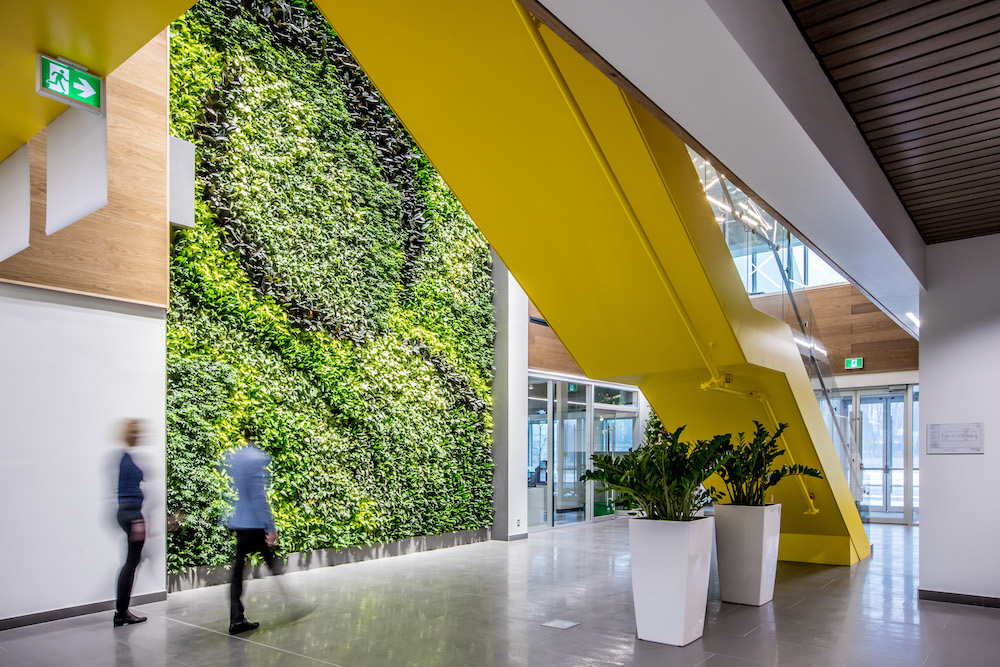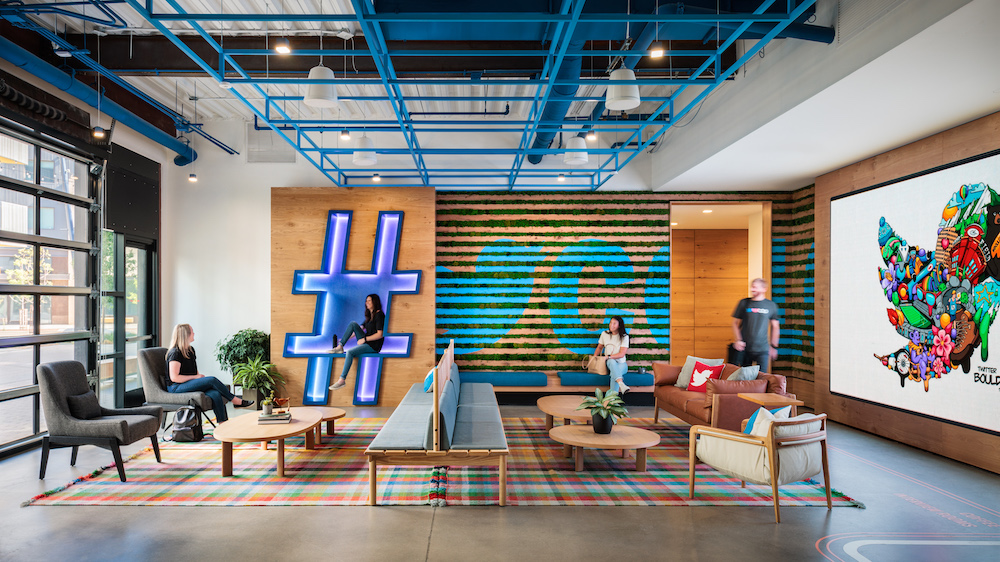Stantec’s David Martin explores how the office could send us home energized and inspired.

No place, perhaps, was quite so disrupted by the COVID 19 pandemic as the office. It’s no longer forbidden to dream big when it comes to the workplace. Or ask questions like what does it take to design environments where people feel energized when the work day is done?
It means designing to set the best stage for productive and satisfying work—an environment that allows the whole person to show up at the office and supports and engages them throughout the day, gives them choice and control and shows that it cares about their overall well-being, mental and physical health.
As we think of how to make our offices net-positive in terms of energy, shouldn’t we begin to think about making our team members net-positive too?
Let’s start with the basics—when we spend the day in a space that sets the stage for us to do our best work in our various modes, that’s energizing.
1. Design for the way we work today.
A variety of spaces to accommodate both collaboration and privacy
The open office promotes collaboration and communication, but with the way we work today we also require places where we can be alone and really think. We need social spaces to promote the exchange of ideas and private spaces that allow for focus and contemplation. Our designs should strike a balance between calm and energy.
Accommodate newly emergent needs
The remote work model that prevailed during the pandemic revealed many things about the office. And today we can see how quickly things have changed: hybrid work is the norm for many of us. The changing workplace didn’t anticipate that as people returned to the office, at whatever frequency, they would bring their new habits and ways of working with them. Many of us spend a great deal of our daily time on group video calls via Zoom, Teams and other platforms. Neither the large conference room nor the open desking scenario are ideal settings for this activity. Small meeting rooms, for say two to five people, work much better and provide some temporary privacy for the group. In the short term, offices will need more rooms or zones where small groups can participate in video calls.
Getting the mix of spaces right will go a long way toward energizing the workplace. But we must think beyond that if we’re to inspire the whole person. Studies show increased rates of engagement and retention in spaces that support mental and physical well-being. If we can design to the support that, occupants will feel healthier and happier when they leave at the end of the day.
2. Design to promote wellness
Biophilic design
The biophilia hypothesis is that humans have evolved with an affinity for natural things. We get a sense of vitality, a feeling of magic even when we come in contact, even indirectly, with the elements of nature. Research shows that even in a workplace setting biophilia can influence the mood of occupants, reduce their stress, and increase their comfort. For designers, incorporating biophilia can take a variety of forms—from using natural materials in interior finishes or exposing them (mass timber) to allowing for views of nature, creating living green walls, integrating natural analogs for nature and so on—the possibilities are endless.

Liberate the Roof
Maximizing direct contact with nature remains an essential strategy to enhance wellness and increase energy levels. We can tap into the power of nature to heal and reduce stress by integrating natural habitats (from bee colonies to vegetable gardens) in places such as roof terraces, decks and outdoor areas easily accessible by the workplace.
Inspire and encourage movement
We can design the workplace with systems that empower people to participate in a unique work experience that promotes movement and invigorates them. These could range from making treadmills or spin cycles available for low impact workouts to building in fitness tracking into the workplace and gamifying movement so that individuals can track their steps in the office, around an office “racetrack” or up and down flights of stairs.
The impact of design can subtly encourage movement that can promote a healthy and social workplace. We often use spatial flow analysis to simulate movement when we’re comparing potential floorplans for the workplace. Where we place the café, the meeting room, the conference room and the printer, etc can influence the number of trips occupants make during their day and therefore influence their wellness. We look at heatmaps of predicted movement to maximize contact and collaboration in our designs. We want employees to be active participants in their own office environments. We use research on proximity to balance engagement and the distribution of the basic necessities (food, water and rest) to create a place where some walking is encouraged, but it’s never onerous and helps occupants connect socially.
3. Design for culture
Brand and culture
People will be more inspired and energized if they feel like they’re part of something bigger than themselves. And that only comes with having unique spaces that incorporate culture into the design. This can be difficult for organizations located in large office buildings that don’t have strong personality or aesthetic compared to the kind of identity that might be available in smaller scale or historic buildings, but it’s important.
Multi-use spaces
We can see how the idea of multi-use spaces is changing the education sector work where suddenly what was once just a staircase becomes a theater. The stair becomes a place where people can hang out, but is also available for performance or a lecture, informal or formal. We can apply the idea of spaces that allow for various events and behaviors in the workplace, too.
Sense of control
A sense of control brings workplace occupants a degree of comfort. If people can control their lights, the blinds, open a window for fresh air without disturbing others, that contributes to well-being.
A culture of fitness and activity
Organizations are encouraging running, walking, and spinning clubs where their staff can take a break in the middle of the day or get some fresh air, exercise and be with their peers. Promoting this type of culture and allowing space for daily activity helps erode stress and boost energy.
Social equity
Across the many markets we design for we’re starting to talk about health and wellness in association with social equity. In the diverse communities that we tend to serve equity can be a big part of workplace design—it translates to designing so everyone can feel comfortable and connected in the space.

4. Certification and flexible working conditions
Certification
Fitwel is a healthy building certification system. Fitwel’s Workplace Scorecard evaluates twelve different areas known to contribute to occupational health and well-being—from outdoor spaces and indoor environments to food service. A Fitwel-certified workplace has been named by experts a healthy environment in terms of air quality and practices that encourage healthy behavior. A Fitwel workplace should benefit occupants in their overall well-being and energy, so certification is a good recipe for increasing engagement and reducing absenteeism.
Flexible working conditions
Work has become more flexible in recent years, by necessity. But even before the pandemic we were advocating for more latitude in when and where people worked versus a strict 9-to-5 day. A degree of flexibility goes a long way toward allowing for a work-life balance that allows us to bring our best selves to the office and focus while we are there. Firms that go the extra mile and incorporate daycare or food service in their on-site offerings to employees do so to compete for the very best in their industry, but they’re also contributing to well-being and work/life balance. Those that incorporate such services could reap rewards in morale, culture, and performance.
The design approaches we have in our toolbox right now are powerful. Using WELL Building design principles, biophilic design, spatial flow analysis can go a long way to creating a workplace that values occupant wellness. By designing to inspire, engage and promote health, the result will be spaces that energize us at the end of the day, long after the caffeine has worn off.

